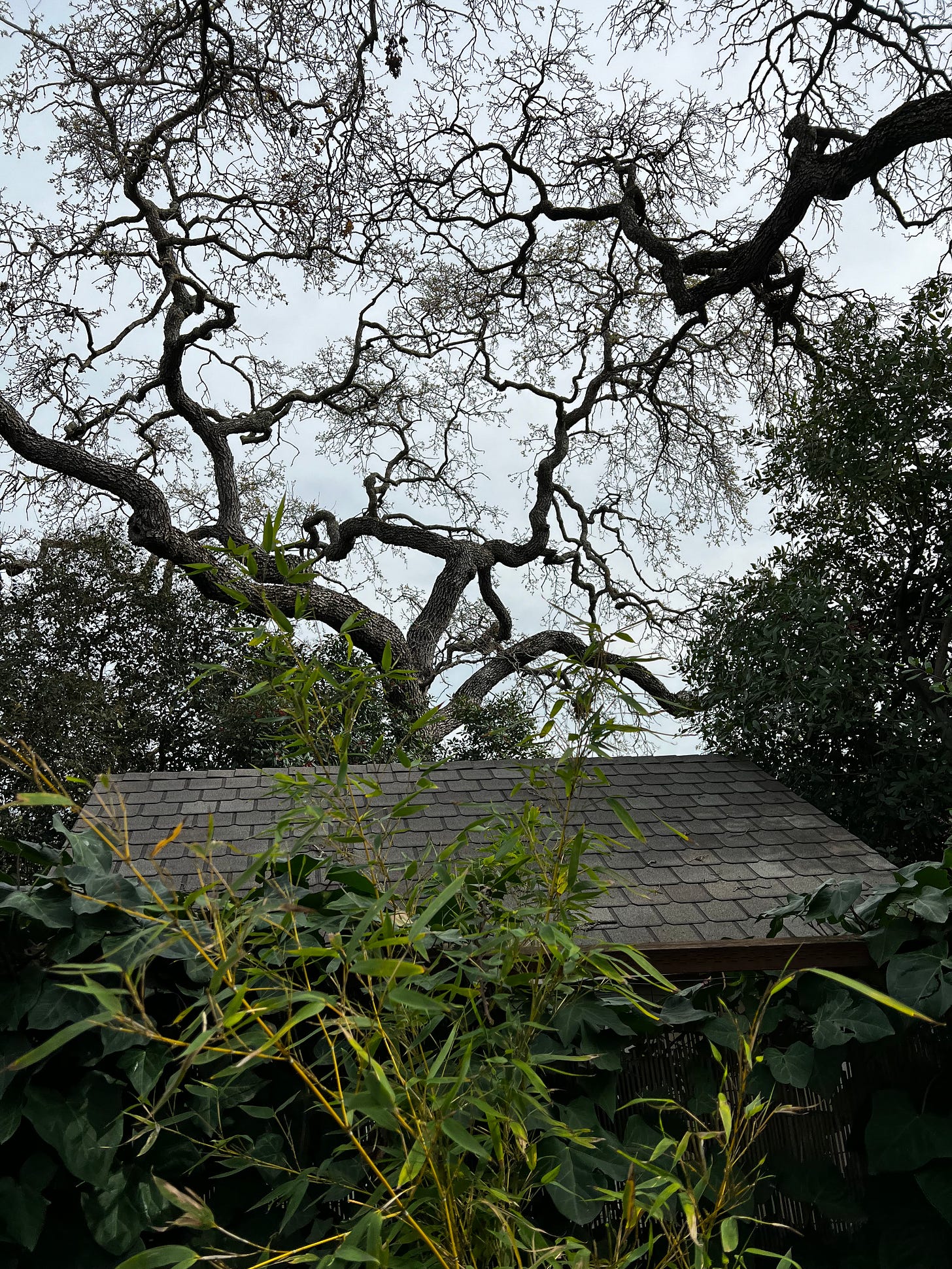(Pre-read note: This week post is directly inspired by the storms which drenched California recently. As I was watching this majestic oak tree being battered by heavy rains and high winds, while our Japanese garden rocks were stoically shining under the water, my mind wondered into a poetic and reflective place. It got personal as I was overwhelmed by the beauty and power of nature but also got dragged into a bit of homesickness and nostalgia. So here is that moment.)
View from my Japanese Garden at home. Yes, it’s real.
In the heart of a forest, a towering tree stood firm, its roots entrenched deep within the earth, a testament to strength and stability. This tree had weathered many storms, its robust trunk and widespread roots anchoring it firmly to the ground, symbolizing the essence of resilience and steadfastness. It knew the value of being grounded, of understanding its foundation, for it was this very foundation that allowed it to reach towards the sky, branches sprawling, leaves fluttering with the breeze, a beacon of endurance and growth.
Not far from this steadfast giant, a grove of bamboo swayed gracefully, their slender forms bending with the wind, never breaking. The bamboo understood flexibility, its roots interconnected, forming a network of support that allowed it to thrive and adapt, no matter the challenge. The bamboo's resilience lay in its versatility, its ability to bend but not break, to yield but not falter, teaching us the power of adaptability and resilience through flexibility.
This tale of the tree and the bamboo mirrors the dynamic landscape of corporate culture and the essence of effective management. Just as the tree teaches us the importance of being grounded in our values and understanding our roots, a manager must be firm in their convictions, understanding the core principles that guide their leadership. They must know their foundation, drawing strength from their experiences and knowledge to lead with confidence and stability.
Yet, akin to the bamboo, a manager must also embrace flexibility, recognizing that the winds of change are constant within the corporate world. They must adapt to new challenges, pivot strategies when necessary, and be open to new ideas, fostering an environment where innovation can flourish. This balance between being grounded and flexible enables a manager to navigate the complexities of leadership, driving their team towards success with resilience and adaptability. This can be even more applicable to project and engineering teams. While methodologies and processes can provide the needed “roots”, I am willing to bet no one has ever seen a project going smoothly from inception to delivery. Hence, the need for constant adaptability to re-frame changes into the root system. As I said in a previous post, don’t leave it to chance.
Thus, the story of the tree and the bamboo is not just a tale of nature but a metaphor for effective leadership and management. It teaches us that to be a better manager, one must be deeply rooted in their values and principles, yet flexible enough to adapt to change, embodying the strength of the tree and the resilience of the bamboo. This balance is the key to nurturing a thriving corporate culture, where stability fosters growth, and adaptability drives innovation, leading to enduring success. It will also make your team greater at responsiveness instead of reactiveness (here is another post)
As for me, it reminded me how nature is the greatest source of inspiration. While your professional world may be demanding or your career not going as planned, always remember to take the necessary 5 minutes to observe and admire a gift Mother Nature may be giving you. Don’t miss it, look for it.





